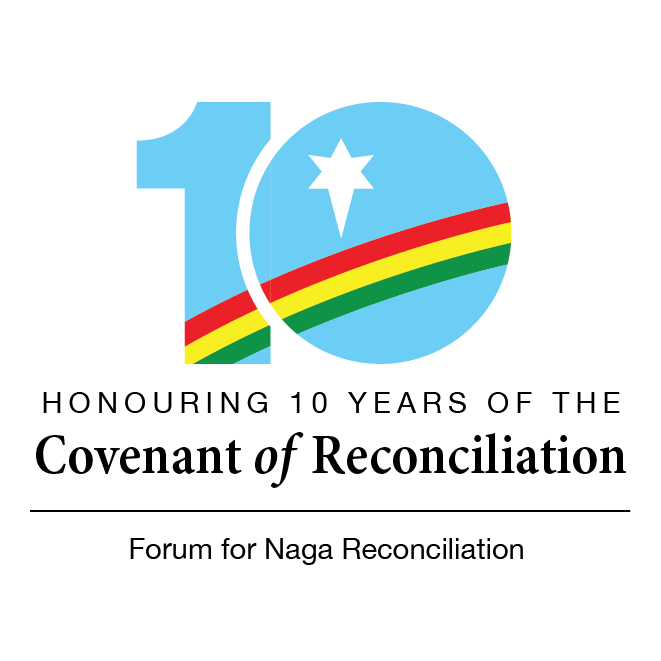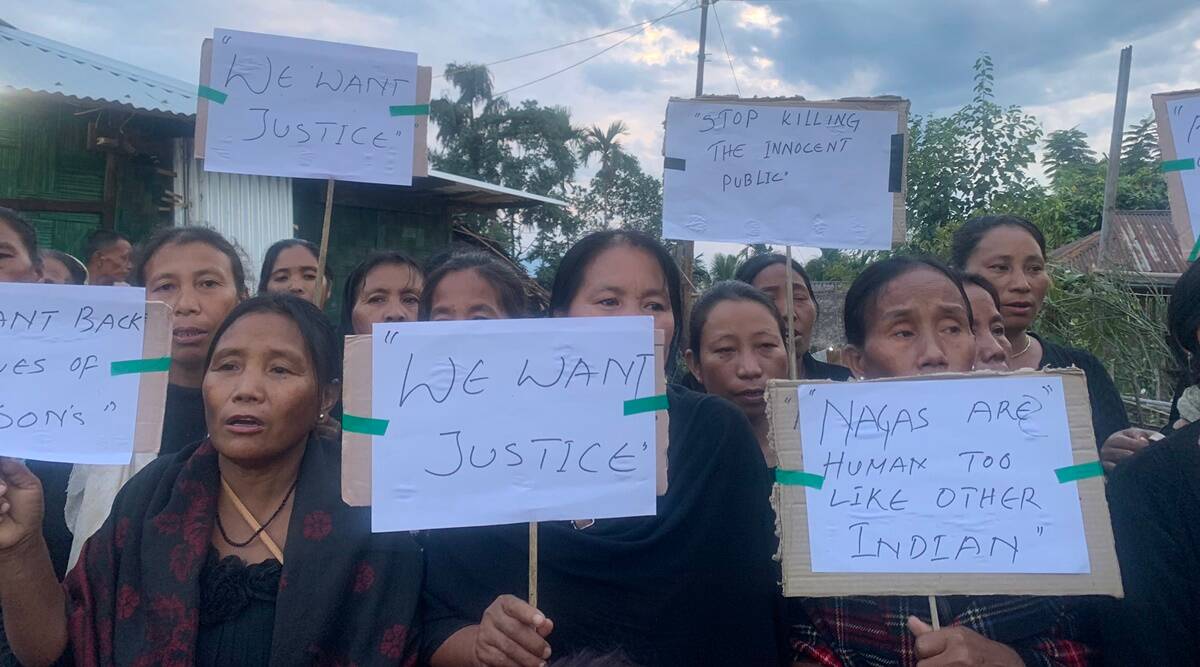By Along Longkumer*
Naga Society’s Moment of ‘Chaos and Destructive Divisions’
The most deadly factional killings in recent memory took place during the months and years leading up to the Covenant of Reconciliation, signed ten years ago on June 13, 2009. The years 2007 and 2008 were particularly bad as the commercial hub of Dimapur and its surrounding became almost a battle ground for rival groups to seek and kill.
It was painful and disheartening to see Nagas were killing each other in the name of our national struggle. Those killed included both civilians and cadres of rival NSCN groups. I recall in particular, following a factional shootout, the horrific images of many dead bodies kept along National Highway 39 (near Diphupar Police Station) before being taken for burial by our mothers and womenfolk.
As the Editor, at that time, of The Morung Express, it is hard to forget the trauma and stress we had to go through, while covering these stories (see italic-points) of violent bloodshed almost on a daily basis.
- In one disturbing incident, at least six civilians belonging to a particular community were abducted and later killed by one of the armed groups. In retaliation around 14 cadres of the rival group were gunned down.
- A few weeks later, in another round of heavy casualties, at least 15 were killed in separate factional clashes in and around Dimapur.
- More killings took place (without going into the details) including overrunning a camp, damage to properties, street violence and widespread cases of extortion and almost daily abductions.
- What was even more worrying was that these armed confrontations and killings were becoming increasingly sectarian with ‘underground politics’ taking on shades of tribal colour.
- ‘Quit’ notice was issued turning one tribe against the other. An allegation of ‘ethnic cleansing’ was made. Leaders of Naga civil societies were targeted with warnings of ‘capital punishment’ if they met their rival group/s.
- On a few occasions even the irate Naga public had to chase out the NSCN factions engaged in internecine clashes in and around urban Dimapur.
- According to one report, business had fallen by 30 per cent in Dimapur because of the mounting clashes and rivalry to control large scale ‘taxation’ to the tune of a few hundred crores.
The state of affairs was so severe that the Nagaland Baptist Churches Council (NBCC) termed the factional infighting during this period as bringing ‘chaos and destruction’ in the State and lamenting that “Naga society is plunging evermore deeply into destructive divisions.”
The Nagaland State government was powerless to do anything. Even the Government of India seemed helpless despite the ceasefire regime in place. The appeal and cry of the Church and Naga civil society made little difference due to the viciousness of killings and retaliations.
It seemed that there was a deep hurt and anger felt by each of the rival groups against the other. This made it even more difficult to contain the situation.
Choosing the Path of Reconciliation and FNR’s Role
Despite the hopelessness, timely mediation and back-channel diplomacy was being pursued.
A 10-Point ‘A Covenant of Common Hope’ was adopted by representatives of Naga political groups, frontal Hohos, Churches and Civil Societies during the Naga Peace Summit III at Chiang Mai, Thailand, on August 21, 2008.
This became the basis for the subsequent Covenant of Reconciliation. All this took place under the initiative of the Forum for Naga Reconciliation (FNR).
Independent observers, government officials and even the security establishment in Delhi publicly admitted that killings arising out of factionalism all but ended post 2009 because of FNR’s efforts.
Their careful approach and ability to walk the tightrope, while dealing with the factions, helped to diffuse tensions. Most importantly, the trust that FNR was able to obtain from the armed groups allowed it to slowly extinguish the fire and fury that was fuelling the ground situation.
Public memory may be short, but FNR should be credited for laying the ground for reconciliation that will hopefully be the cornerstone of a peaceful socio-political order in the years ahead. The spirit of reconciliation is already a work in progress among our national workers.
The subsequent peace dividend that we have come to enjoy today is not because of only the ceasefire regime of the Government of India, but largely flows from spirit of this covenant signed ten years ago.
The Promise and Potential of Naga Reconciliation Not Fully Realized
It is now ten years since the Covenant of Reconciliation was jointly signed by Isak Chishi Swu, Chairman, NSCN/GPRN; SS Khaplang, Chairman, GPRN/NSCN and Brig (Retd) S Singnya, Kedahge (President), FGN.
For benefit of readers, the text of the Covenant is reproduced here for recollection:
Having been deeply convicted by God’s call in Christ, and the voice of the Naga people, for Reconciliation, we hereby solemnly commit before God to offer ourselves to Naga Reconciliation and Forgiveness based on the Historical and Political Rights of the Nagas.
We resolve to continue to work together in this spirit of love, non-violence, peace and respect to resolve outstanding issues amongst us.
Furthermore, we exhort and call upon other Naga groups to join us in Reconciling with each other.
Two of our leaders, Swu and Khaplang are no more with us. We remember their vision and the courage they demonstrated along with Singnya to stand up and say yes to Naga reconciliation.
At the same time it is sad but true that the signing of the Covenant was followed by more splits and division. The legitimacy of the document is also somewhat lost because the NSCN Khaplang, a signatory, has since split into at least three more faction.
The question that pricks one’s mind therefore is what we are going to celebrate during this 10th anniversary.
In that sense we need to accept that the full potential and promise of Naga Reconciliation has not been met. Perhaps we need to honestly retrospect why even after ten years we have not been able to ‘resolve outstanding issues amongst us,’ or for all Naga groups ‘to reconcile with each other.’
There is no doubt that we need to renew our focus on reconciliation. This is vital for the Naga people’s future and their peaceful co-existence. At the other end of the spectrum, the Naga Political Groups must be motivated to constructively work together.
It is important for the Naga mediators from civil society or FNR to realize that reconciliation alone is not sufficient. At some point of time the need for power sharing becomes necessary in order to engage with the Naga Political Groups and encourage them towards self-governance and nation-building initiatives.
Reconciliation is a process which will continue to remain relevant for the Nagas. For the immediate though, an inclusive model of power sharing is something that must be worked on collectively.
The coming together of the NNPGs under the Working Group is a fine model of sharing power. A Naga National Unity Government should be the next obvious step.
No one will disagree that the mandate of the Naga public is for all Naga political groups to work together to resolve the political issue with India. Peace talks with the Government of India will take care of itself if Nagas speak in unison and through a common platform.
Naga Reconciliation and the Hope for Our Children
My two children were born in 2006 and 2009 respectively. They do not carry the trauma or scar of violent bloodshed related to the Naga political struggle and the factional killings that most of us older people have seen in our lifetime.
Our children were probably too young to know. But more importantly after 2009, the killings (arising out of factionalism) dipped suddenly and gradually stopped almost completely.
We are now in 2019 and ten years since its signing, it must be said that there is relative peace and calm in our midst. Growing up in the years following its signing, our children were spared the distress of having to read, hear or listen to stories of bloodshed.
The Covenant of Reconciliation signed ten years ago by our Naga leaders Isak Chishi Swu, SS Khaplang and Brig (Retd) S. Singnya should be seen in the context of how this step towards Naga reconciliation had a positive impact for our children and their hope for a better future.

Naga Reconciliation – Renewing Hope for Future Generations: The Naga Reconciliation is not an event, it is a process, a journey towards healing, forgiveness and a dignified shared Naga future. This file photo shows Rev. Dr. Wati Aier, Convener of the FNR, at a public meeting in Dimapur with children affected by factional violence and members of the Naga Choir (September 2008).
Now it is even more important for the Naga people and our leaders be reminded about the vision and purpose behind the Covenant of Reconciliation and why the wisdom found in this document should not be forgotten. If anything, the commemoration of its 10th anniversary should be a time to deliberate and reflect on how this Covenant can be further strengthened, enlarged to include more groups and made relevant to the present times.
Killings among the Nagas may have stopped, yet factionalism and division is very much still alive and manifests itself in different forms and experiences, which if not addressed will be detrimental for the future generation.
Can the FNR and other Naga mediators start reimagining Naga Reconciliation or the Covenant of Reconciliation?
About the author:
*Along Longkumer is the first Editor of The Morung Express and has written extensively on the Naga political issue. He currently runs the media portal The Naga Republic http://www.thenagarepublic.com/and continues to engage with the complexity of the world around us through his commentary and insights.








 An orbiting message of peace
An orbiting message of peace The Top Viral YouTube Videos of 2017
The Top Viral YouTube Videos of 2017 The last Konyak headhunters of Nagaland
The last Konyak headhunters of Nagaland Meet R.N. Ravi, who is mediating peace with the Nagas
Meet R.N. Ravi, who is mediating peace with the Nagas










Leave a Reply
Your email address will not be published. Required fields are marked (required)